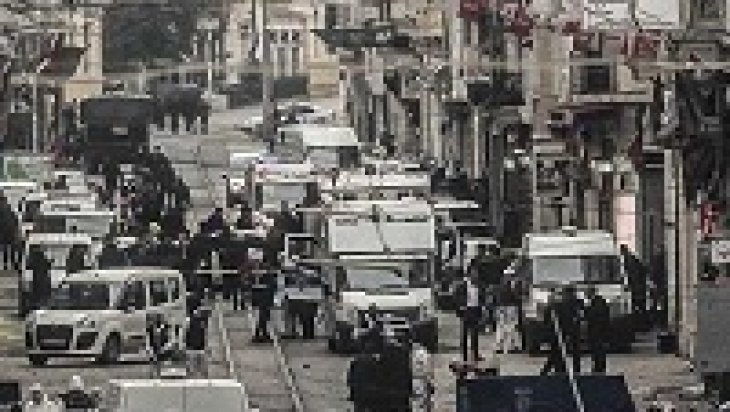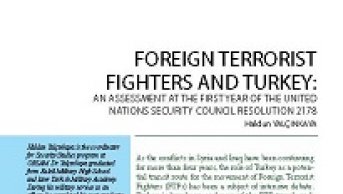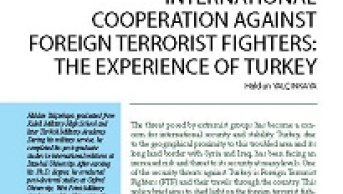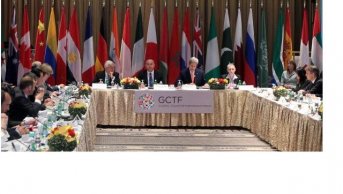Analysing the ISIS Attacks in Turkey and Turkey’s Struggle

The terrorist attack on 19 March 2016 in Taksim/İstanbul, which caused the lives of four people, was the latest of the twelve ISIS attacks in Turkey for the last two years. ISIS’s terrorist attacks from 20 March 2014 to 16 March 2014 killed a total of 163 and left more than 766 people wounded.
Reducing the attacks to casualty numbers per se remains insufficient to express the tragedies that were experienced. Yet, it is important to analyse the wave of attacks in order to realize the ISIS’s stance toward Turkey. One of the attacks was an armed clash during a road checkpoint, five of them were cross-border assaults and six of them were suicide bombings.
In this regard, one can observe four different categories for the ISIS attacks against Turkey. The first is the threat caused by the ISIS members passing through Turkey as transit terrorist fighters. The second is the rocket attacks to Turkish soil as responses to Turkey’s artillery fires, which is conducted for the anti-ISIS coalition attacks against ISIS in Syria. The third is the suicide bombings against selected targets in Turkish territory. And the fourth is the attacks against Turkish targets in Iraq. The attacks against the Bashiqa Camp, where the Turkish military trains the local forces, are within this category but outside the scope of this analysis. No doubt that Turkey’s relocation of the Suleiman Shah Tomb to an area nearer to the border has prevented a similar confrontation in the territory of Syria.
A closer look at these attacks suggests that the suicide bombings, which killed 156 people and injured 755, are the bloodiest among others. Foreign terrorist fighters had been the perpetrators of suicide bombings and the transit passing attack. The attacks, relatively less damaging, along the border and in Iraq have been immediately retaliating by the Turkish side.
Turkey is not yet at the stage of indiscriminate terrorist attacks
The threat posed by ISIS foreign terrorist fighters particularly stand out in ISIS’s terrorist attacks against Turkey. According to the United Nations Security Council Resolution No. 2178, everyone recruited by terrorist organizations in Syria and Iraq is considered as foreign terrorist fighters.
In other words, all individuals recruited either from Turkey or from the third countries are similarly considered as foreign terrorist fighters. The definition matters because of the combat experience of the foreign terrorist fighters, which amplifies the level of threat they pose before they depart from their home countries comparing to their return. In sum, ISIS terrorist fighters, whether from Turkey or not, pose a serious threat against Turkey when they return.
Three of ISIS foreign terrorist fighters’ suicide bombings took place in Sultanahmet and Taksim, while the other three attacks were carried out in Diyarbakır, Suruç and Ankara. A close assessment of the attacks and their timing show that ISIS has a high capacity to select its targets in Turkey in accordance with the current agenda of its time period. Undoubtedly, Turkey’s highly Muslim population is definitely a factor about that. ISIS has not yet executed indiscriminate attacks in Turkey because it has not yet been able to recruit as many people from Turkey as it desires. Unfortunately there is no guarantee that it will not initiate this stage.
In addition, as the media reports suggest, the suicide attackers, responsible from the bombings in Turkey, had participated in the ISIS activities in Iraq and Syria. In essence, it is a fact that security forces usually do not share information about all attacks that they prevented. Therefore, the data at hand does not enable a reliable and accountable analysis on the capability of the experienced terrorist fighters to reach their objectives.
Nevertheless, ISIS suicide bombings in Turkey have caused a terrifying average number of 26 deaths and almost 136 woundeds per attack. This proportion clearly demonstrates the lethal impact of the experienced foreign terrorist fighters.
In fact, it should be emphasized that Turkey has been facing terrorist attacks because it shares borders with conflict zones and these attacks have a high potential to be spread to the rest of the civilized world. In other words, the attacks of the last two years against Turkey would be a first indicator for the spread of ISIS terrorism to the world.
Four phases of Turkey’s ISIS strategy
In order to grasp Turkey’s strategy to counter ISIS, a significant point must be taken into consideration. With the beginning of the Syrian civil war in 2011, Turkey started sharing borders with non-state actors. As of the current moment, Turkey faces PYD, ISIS and the opposition groups including the FSA, across the border. As a matter of fact, sharing border with non-state actors, which are also fighting each other, triggers Turkey’s security concerns. In addition, the situation becomes further complicated as Turkey is also neighbouring with the Syrian regime, against which Turkey repeatedly uttered its rejection in diplomatic platforms, and Russia supports the regime in Syria.
That’s to say, Turkey feels the burden of all security risks in the region. Turkey has been fighting against the terrorist organization PKK for more than thirty years.
Nevertheless, ISIS, comparing to PKK, encompasses more unknowns for Turkey. In this context, Turkey’s strategy against ISIS involves four different phases. At first, Turkey opted for preventing the travels of the foreign terrorist fighters since the beginning of 2014. As of today, Turkey has made great progress on that. In the second phase, Turkey has started to reinforce its Syrian border in order to prevent the border-crossings from Summer 2015 onwards and has started to witness the positive outcome of that.
The third and the most important phase is about preventing the attacks by foreign terrorist fighters returning to Turkey. It will definitely be a very difficult and arduous task. Though, it will not be enough and the last stage has to involve these people’s de-radicalization, for which there is currently no consensus, about which methods would be effective, all around the world. While it is known what to do in the first three phases, there is even no roadmap as to how the last phase should be.






